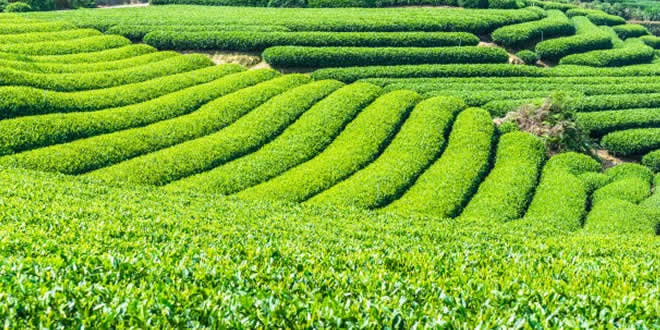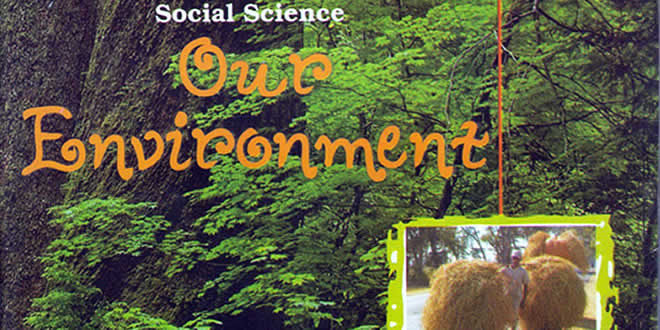Human Environment Interactions [Page 2]: The Tropical and the Subtropical Region – 7th Class Geography Chapter 08
Question: How does environment play a dominant role in the distribution of population in the Ganga-Brahmaputra basin?
Answer: Ganga-Brahmaputra Basin:
- Ganga-Brahmaputra basin has varied topography.
- The environment plays a dominant role in the distribution of the population here.
- The mountain areas with steep slopes have inhospitable terrain.
Hence less number of people live in the mountain area of the Ganga-Brahmaputra basin. - The plain area provides the most suitable land for human habitation.
- The soil is fertile.
- Agriculture is the main occupation of the people.
- The density of population is very high.
- Since cultivation of paddy requires sufficient water, it is grown in the areas where the amount of rainfall is high or enough water is available.
Human Environment Interactions – Question: Give an account of agriculture in the Ganga-Brahmaputra Basin.
Answer: Agriculture in Ganga-Brahmaputra Basin:
- Wheat, Maize, Sorghum, Gram and Millet are major crops that are grown as food crops.
- Cash crops like sugarcane and jute are grown in large quantities.
- Banana plantation are seen in some areas of the plain.

- In West-Bengal and Assam tea is grown in plantations.
- Silk is produced through the cultivation of silk worms in parts of Bihar and Assam.
- In the mountains and hills, crops are grown on terraces made on gentle slope.
Question: Explain the forest wealth of Ganga-Brahmaputra Basin.
Answer:
- The vegetation cover is according to the type of landforms.
- Delta region is covered with mangrove forests.
- In this basin tropical deciduous trees grow along with teak, sal, peepal.
- Thick bamboo groves are in Brahmaputra plains.
- In parts of Uttarakhand, Sikkim and Arunachal Pradesh and other small states of the North-east coniferous trees like pine, deodar and fir are seen.
Question: Write about the fauna of Ganga-Brahmaputra basin.
Answer: A wide variety of wild life is found here:
- Elephants, tigers, deer and monkeys are common.
- One homed rhinoceros, Bengal tiger, crocodiles and alligators are found.
- Large aquatic life is found in fresh waters like rohu, catla, hilsa.
Question: Why are terraces built on the mountain slopes?
Answer: Terraces are built on the gentle (mountain) slopes to create flat surfaces on which crops are grown. The slope is removed so that water does not ran off rapidly.
Question: Where is blind variety of dolphin found?
Answer: In the fresh water of River Ganga and River Brahmaputra, blind variety of dolphin, locally called Susu, is found.
Question: Why is blind dolphin facing extinction?
Answer: The blind dolphin or Susu is facing extinction at the hand of humans.
- The Dolphin eats small fish only. The presence of Susu is an indication of the health of the river.
- The untreated industrial and urban wastes with high amounts of chemical are killing this species.
Question: Which towns and cities are located in the Ganga-Brahmaputra Basin?
Answer:
- The Ganga-Brahmaputra Plain has several big towns and cities.
- The cities of Allahabad, Kanpur, Varanasi, Lucknow, Patna all with a population of more than ten lakhs are located along the River Ganga.
- The waste water from these towns and industries is discharged into the river leading to its pollution.
Question: Write a note on the transportation found in the Ganga-Brahmaputra Basin.
Answer:
- All the four means of transport are well-developed in Ganga-Brahmaputra basin.
- In the plain areas the roadways and railways transport the people from one place to another.
- The waterways, is an effective means of transport particularly along the rivers. Kolkata is an important port on the river Hooghly.
- The plain areas have a large number of airports.
Question: Explain: tourism is an important activity of the Ganga-Brahmaputra basin.
Answer: Tourism is an important activity of the basin.
The following make the basin important from the point of tourism.
- Taj Mahal on the banks of River Yamuna in Agra.
- Allahabad on the confluence of the River Ganga, Saraswati and Yamuna.
- Buddhist centers in Uttar Pradesh and Bihar.
- Lucknow with its Imambara.
- Assam with Kaziranga and Manas wild life sanctuaries.
- Arunachal Pradesh with a distinct tribal culture.
There are so many other places to visit.
Human Environment Interactions – Question: Fill in the blanks with appropriate words:
- Women of warrior tribe in Roman empire were called …………….
- Small rivers that join a main river are called ……………………
- Large houses called …………………… have steep slanting roof.
- West Bengal and Assam are known for …………………….. plantations.
- People in ………………………… eat queen ants and their eggs.
Answer:
- Amazons
- Tributaries
- Maloca
- Tea
- Amazon basin
Question: State whether the given statements are true or false.
- Spanish explorers discovered the Amazon river.
- It rains only for two months in the Amazon basin.
- The flesh eating piranha fish is found in Amazon river.
- In the Ganga-Brahmaputra delta area, Bengal tiger, crocodiles and alligators are found.
- Agra is on the confluence of river Ganga and Yamuna.
Answer:
- True
- False
- True
- True
- False
Question: Answer the following questions briefly:
- Name the continent in which the Amazon Basin in located.
- What are the crops grown by the people of the Amazon Basin?
- Name the birds that you are likely to find in the rain forests of the Amazon.
- What are the major cities located on the river Ganga?
- Where is the one-homed rhinoceros found?
Answer:
- South America
- The people of the Amazon Basin grow tapioca, pine apple and sweet potato. Cash crops such as coffee, maize and cocoa are also grown.
- Name the birds that you are likely to find in the rain forests of the Amazon.
- The major cities located on the river Ganga are Allahabad, Kanpur, Varanasi, Lucknow, Patna and Kolkata.
- The one-homed rhinoceros is found in the Brahmaputra plain.
Question: Tick the correct answer:
- Toucans are a type of
(i) birds (ii) animals (iii) crops - Manioc is the staple food of
(i) Ganga Basin (ii) Africa (iii) Amazon - Kolkata is located on the river
(i) Orange (ii) Hooghly (iii) Bhagirathi - Deodars and firs are a type of
(i) Coniferous trees (ii) Deciduous trees (iii) Shrubs - Bengal tiger is found in
(i) Mountains (ii) Delta area (iii) Amazon
Answer: (a) – (i), (b) – (iii), (c) – (ii), (d) – (i), (e) – (ii)
Question: Match the following:
(a) Assam
(b) Terrace farming
(c) Sericulture (Silk farming)
(d) Slanting roof
(e) Ganga plain
(f) Varanasi
(g)Fish
Answer: (i) – (f), (ii) – (d), (iii) – (g), (iv) – (c), (v) – (a)
 Class Notes NCERT Solutions for CBSE Students
Class Notes NCERT Solutions for CBSE Students


